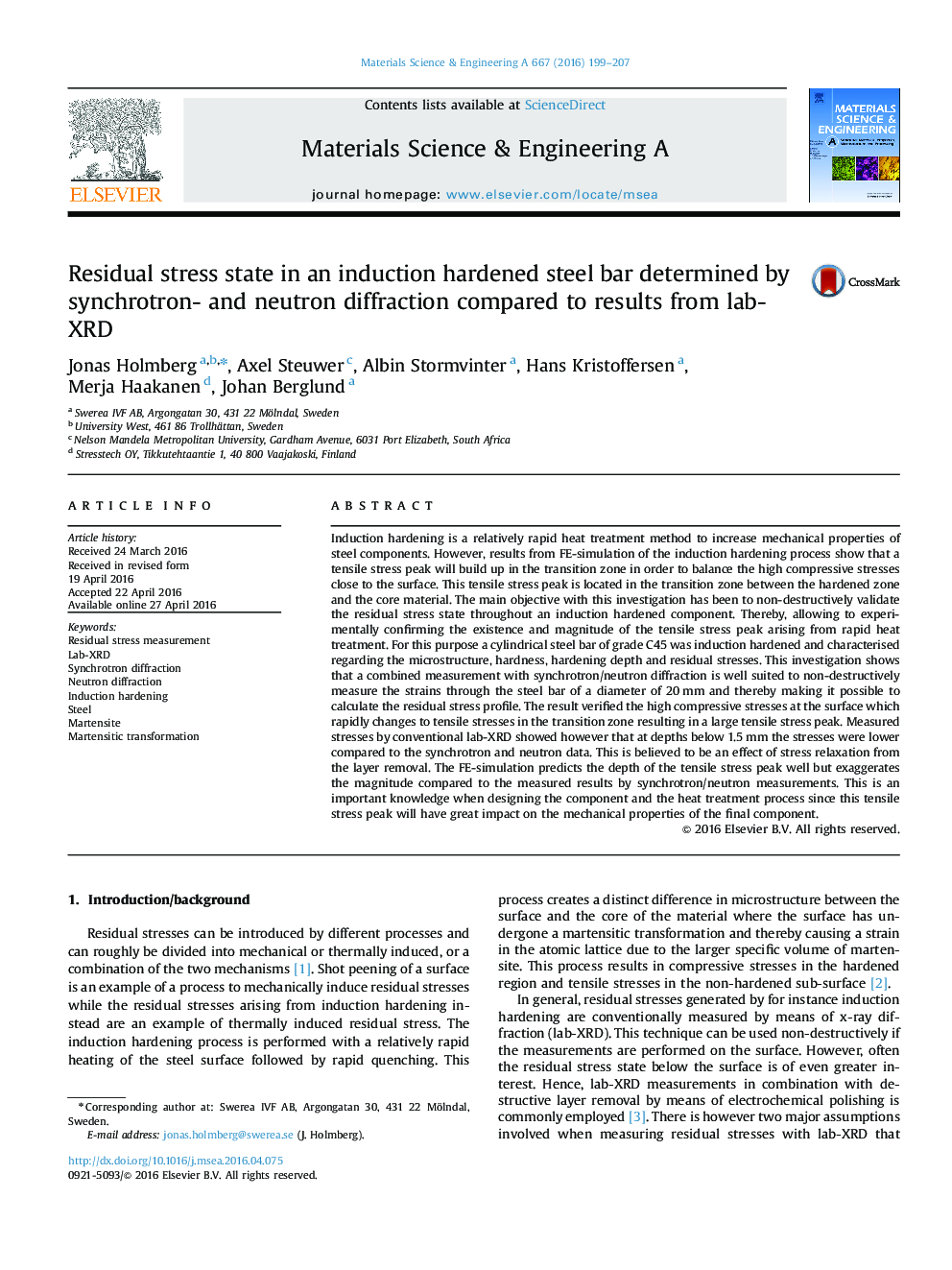| کد مقاله | کد نشریه | سال انتشار | مقاله انگلیسی | نسخه تمام متن |
|---|---|---|---|---|
| 1573302 | 1514676 | 2016 | 9 صفحه PDF | دانلود رایگان |
عنوان انگلیسی مقاله ISI
Residual stress state in an induction hardened steel bar determined by synchrotron- and neutron diffraction compared to results from lab-XRD
دانلود مقاله + سفارش ترجمه
دانلود مقاله ISI انگلیسی
رایگان برای ایرانیان
کلمات کلیدی
موضوعات مرتبط
مهندسی و علوم پایه
مهندسی مواد
دانش مواد (عمومی)
پیش نمایش صفحه اول مقاله

چکیده انگلیسی
Induction hardening is a relatively rapid heat treatment method to increase mechanical properties of steel components. However, results from FE-simulation of the induction hardening process show that a tensile stress peak will build up in the transition zone in order to balance the high compressive stresses close to the surface. This tensile stress peak is located in the transition zone between the hardened zone and the core material. The main objective with this investigation has been to non-destructively validate the residual stress state throughout an induction hardened component. Thereby, allowing to experimentally confirming the existence and magnitude of the tensile stress peak arising from rapid heat treatment. For this purpose a cylindrical steel bar of grade C45 was induction hardened and characterised regarding the microstructure, hardness, hardening depth and residual stresses. This investigation shows that a combined measurement with synchrotron/neutron diffraction is well suited to non-destructively measure the strains through the steel bar of a diameter of 20Â mm and thereby making it possible to calculate the residual stress profile. The result verified the high compressive stresses at the surface which rapidly changes to tensile stresses in the transition zone resulting in a large tensile stress peak. Measured stresses by conventional lab-XRD showed however that at depths below 1.5Â mm the stresses were lower compared to the synchrotron and neutron data. This is believed to be an effect of stress relaxation from the layer removal. The FE-simulation predicts the depth of the tensile stress peak well but exaggerates the magnitude compared to the measured results by synchrotron/neutron measurements. This is an important knowledge when designing the component and the heat treatment process since this tensile stress peak will have great impact on the mechanical properties of the final component.
ناشر
Database: Elsevier - ScienceDirect (ساینس دایرکت)
Journal: Materials Science and Engineering: A - Volume 667, 14 June 2016, Pages 199-207
Journal: Materials Science and Engineering: A - Volume 667, 14 June 2016, Pages 199-207
نویسندگان
Jonas Holmberg, Axel Steuwer, Albin Stormvinter, Hans Kristoffersen, Merja Haakanen, Johan Berglund,